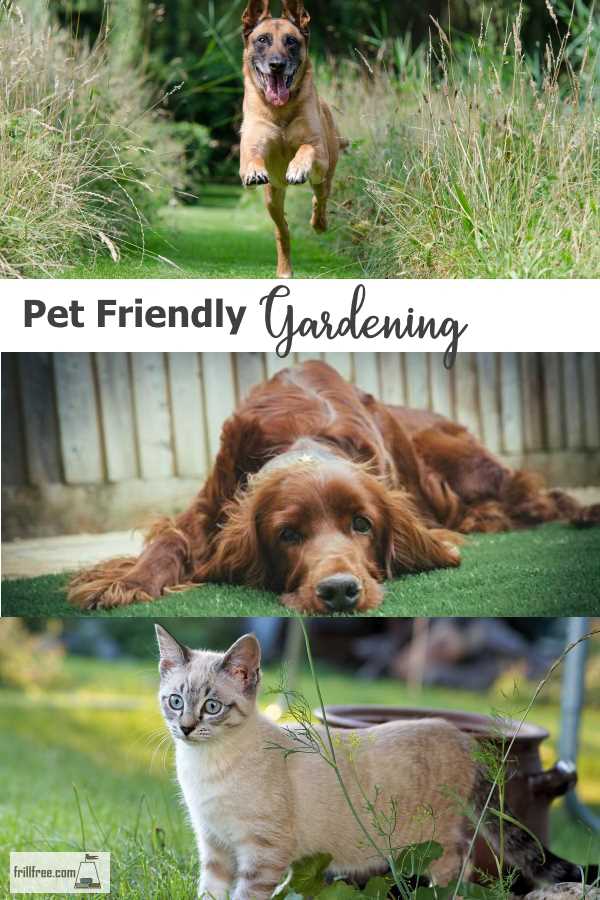- Homesteading
- Garden Designs
- Pet Friendly Gardening
How to Make Your Garden Safe For Your Pet
Pet Friendly Gardening
Guest Post;
Maria has suffered from depression and anxiety for years. Her hobbies--like gardening--play a major role in maintaining her mental health.
See more about Maria on her website Hobby JR.
Having a yard is a great asset if you’re pet owner, but not if you’re trying to maintain a garden at the same time.
Not only does a frisky dog put your flowers and shrubs at risk, but also compost and certain plants and buds can be potentially fatal to your pooch if ingested.
Give Your Dog Its Own Space
The only completely stress-free way to have a garden is to designate a specific section for your dog by creating a separate fenced-in area. Other inclusions to consider:
Installing low borders, barriers, and/or fencing
to protect plants and flowers. They don’t have to be the height of bushes at
the palace of Versailles, just high enough to give your dog a cue not to enter
the area. If your pooch has a tendency to run through your garden, sequester
the area with a fence that’s at least 4-feet high.
If you choose a fence, make sure it’s sturdy without blocking sunlight from your plants. Think chain-link or split-rail fences or decorative garden fencing. Raised beds can protect your plants and flowers while giving your dog free reign of other spaces.
Keep Your Dog Out Of Trouble
If you don’t want to ruin the aesthetic of your yard or additional changes aren’t within your financial means, make sure you take your dog on frequent walks so it can work off extra energy in places other than your garden.
Should this be taxing on your schedule, consider hiring a dog walker to handle the extra load.
A doggy daycare can also be beneficial because your pooch will get extra exercise while having social time.
Keep Tools And Chemicals Locked Up
Protect your dog by locking up all tools and
chemicals (think rakes and fertilizers) in the garage or shed that can be
securely closed and/or locked.
Temporarily keep your dog out of the garden
after treating your lawn or plants with fertilizers or pesticides. Better yet,
use non-toxic and/or organic options instead.
Plant Pet-Friendly Shrubs
You don’t have to compromise beauty for safety. Consider planting dog-friendly shrubs and groundcovers such as Smoke Tree, Red-Twig, Dogwood, Lilac, Spiraea, Elfin Thyme, Irish Moss, Labrador violet, Snow in the Summer, Spiraea and Miniature Stonecrop.
Minimize Hazards
There are several other things to keep in mind
when creating a safe garden environment for your pet that may not be top of
mind, to include:
- Using dog-friendly landscaping
such as mulch and cedar chips in lieu of rough gravel.
- Keep trash and recycling bins
tightly closed and out-of-reach.
- Being mindful of sharp furniture
or fencing and exposed nails. Avoid toxic chemicals including
slug or snail killer.
- Keep up with the removal of leaves
and excess debris that can provide a breeding ground for snakes and other
pests.
- Prevent standing water in vessels such as bird baths, ponds, and flower/plant pots as dangerous blue-green algae and infectious leptospirosis can form.
Don’t let your pet run free without dog-proofing your space first. Whatever you do, don’t scold your pooch. Punishment is traditionally non-constructive. Instead, use positive training techniques.
Proper obedience is the key to keeping your dog out of your garden and any other places that provoke mischief.
Start instituting rules from day one, and it will make things easier going forward.
If you can’t handle the task on your own, enroll your dog in an obedience school to speed up the process.















